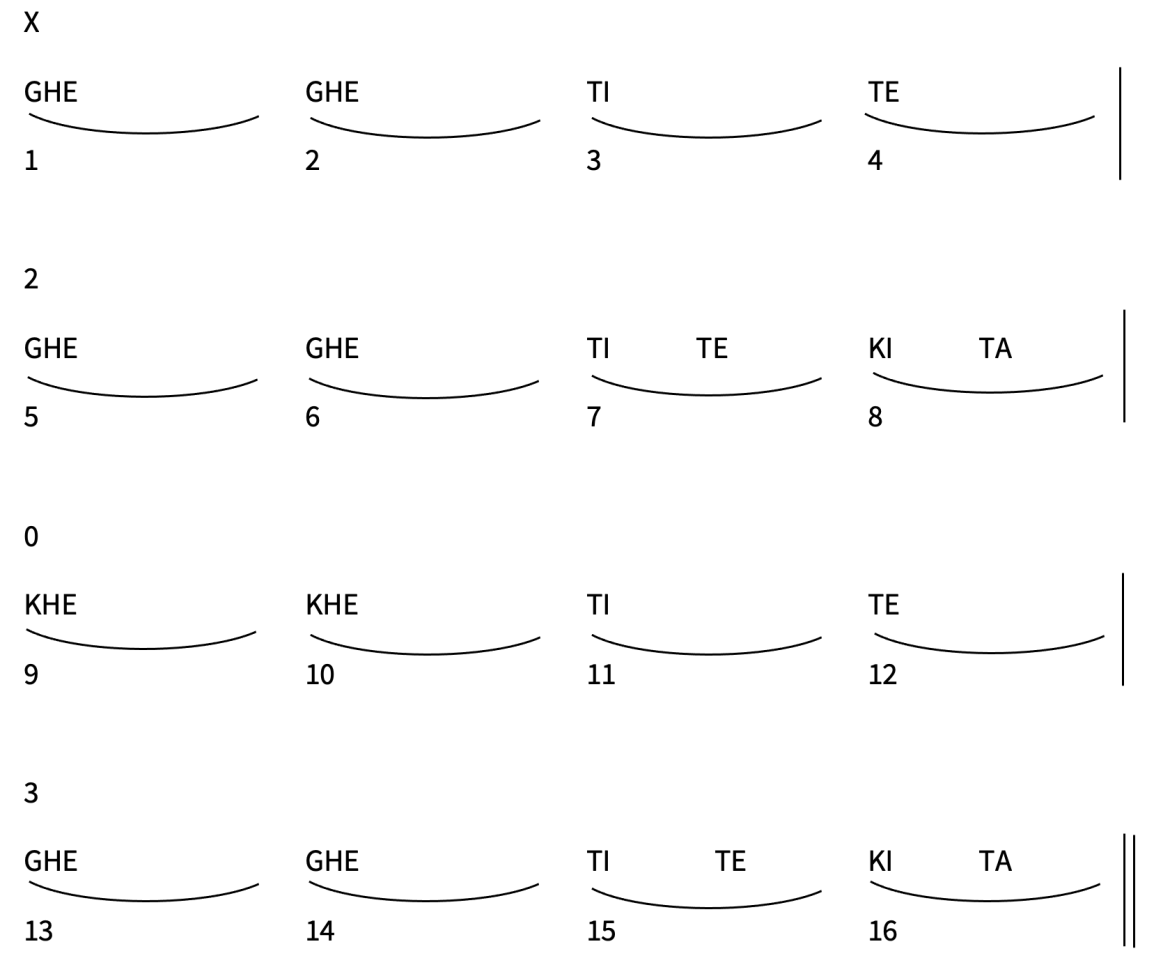Hand placement, coordination and tonal quality (with exercises)
- Play a greater range of bols, including:
- closed sounds:
- large drum – KHE
- small drum – TITE
- open sounds:
- large drum – GHE
- small drum – NA
- closed sounds:
- Maintain consistency when striking the Tabla, ensuring the same tone is produced when a sound is repeated
- Continue to develop an understanding of accents, dynamics, pitch and timbre within the repertoire played
Demonstrate how to play the closed bols KHE and TITE and the open bols GHE and NA.
Ask learners to observe the teachers’ hand stroke, using two or three fingers to play TI and the index finger to play TE.
The bol TI is made by the middle and ring fingers, but the little finger should be positioned close to the ring finger to avoid the buildup of tension.
On the small drum, demonstrate how to use two or three fingers to play TI and the index finger to play TE, and how to strike the outer edge (kinar) to play NA.
The sound TI is made by the middle and ring fingers, but the little finger should be positioned close to the ring finger to avoid the buildup of tension.
To play GHE, show learners how to use the palm of the hand to play over the syahi on the large drum (baya) without lifting the wrist.
When playing the bol GHE, ensure that learners’ wrists are placed behind the syahi on the large drum (baya) with their palms arching over black spot.
Learners must refrain from using excessive force when striking the Tabla.
Encourage learners to maintain a consistent tempo whilst playing, in both ekgun (single speed) and dugun (double speed), ensuring hands remain close to the Tabla.
Chaugun (quadruple speed) can also be introduced through teacher demonstration.
Ask learners to demonstrate correct arm and hand positioning when playing KHE.
All four fingers should be covering the syahi on the large drum (baya).
Learners should maintain an appropriate hand position. Ensure that wrists, arms and shoulders remain relaxed at all times.
Ask learners to demonstrate the correct hand strokes for TITE.
Teach learners to play appropriate patterns with clear and concise tones, e.g. Kaida 1:

Variations can also be taught (paltas).
Discuss the pitch and timbres of different bols within the patterns played.
Encourage learners to incorporate accents and dynamics into their playing.
Teach exercises that develop the coordination of right and left hands, e.g.
GHE GHE TI TE
GHE GHE NA NA
Show learners how to play both of these exercises in ekgun (single) and dugun (double). Good tempi to begin with are ekgun at 60bpm and dugun at 120bpm. Encourage learners to perform along with the metronome or lehra at these tempi.
A lehra is a repeating melody that can be used to keep the beat and support counting of the time cycle. Lots of suitable lehras can be found on YouTube.
If learners are finding certain strokes difficult, teachers can adapt exercises as necessary.
Explore the progression of this Learning Objective
Continue exploring the current Programme of Study